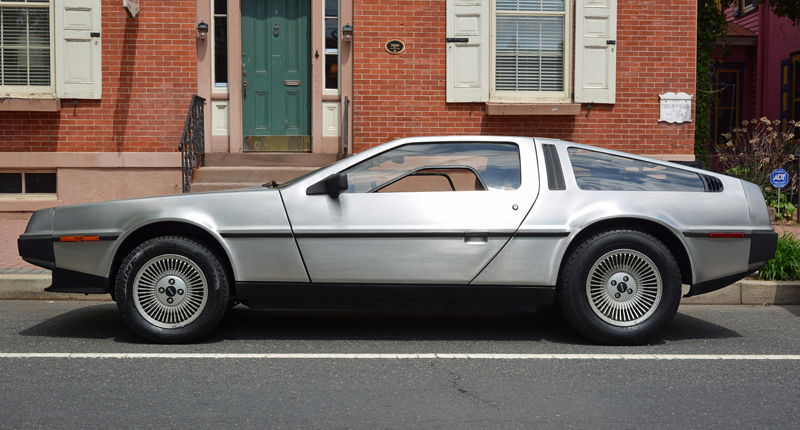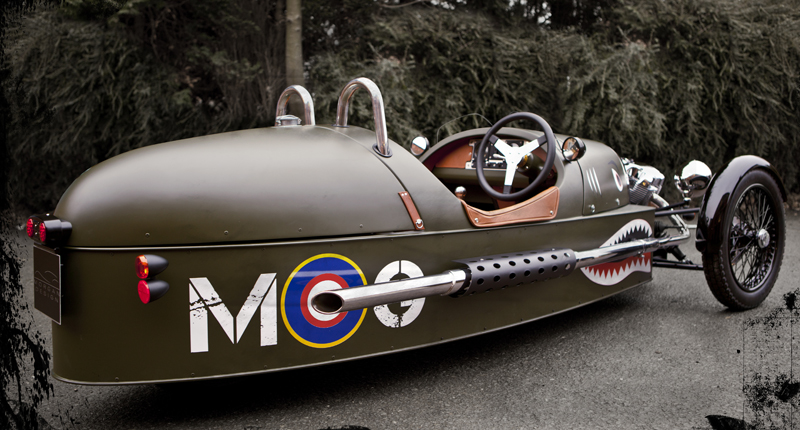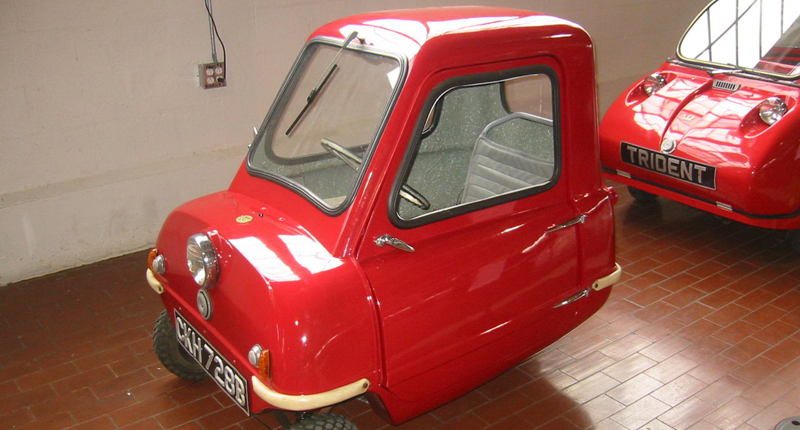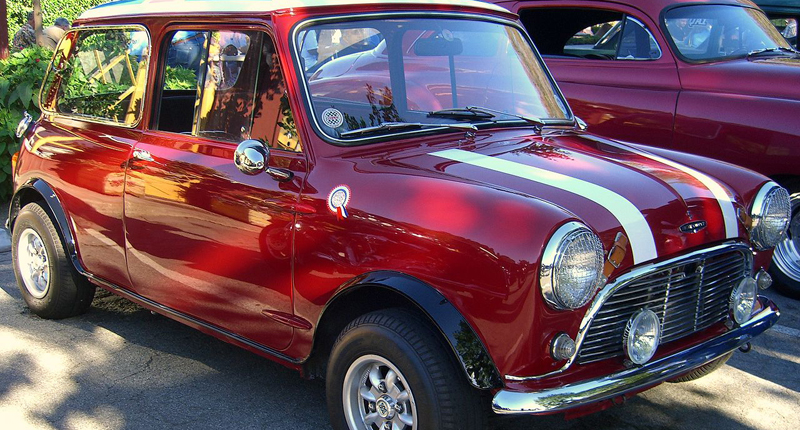Five years ago, launching a decent streaming platform took millions. Now? A teenager with a laptop can build something that reaches millions. That shift…
8 unusual cars (and a tank) you need to drive before you die [pt 1 of 2]

What’s life as a petrolhead without an unrealistic dream garage or a bucket-list to conquer the world’s best driving roads? The former is nearly always full of beautiful and ridiculously fast exotica – hypercars and supercars – the stuff of nine year-old bedroom walls, and honestly usually best savoured on the latter.
But what about something a little more down to earth, more attainable, something the common man can aspire to, and something a little more unusual? Twitter is a great medium for crowd sourcing ideas, so I asked:
Car peeps: What is the most unusual car you want to get your hands on to drive? (Unusual, not necessarily fast) And go…
The responses I got included a bunch of cars so special that the list containing them couldn’t possibly be contained in a single article. Some of these very special cars are still in production, some are out and out classics and others were clearly just built to make you feel awesome.
And here they are, in no particular order:
Morgan 3 Wheeler

There is no doubt as to why this is an unusual car (is it a car?), after all it has three wheels, and not in the way that you might remember (remember three wheeler tricycles and those God-awful motorised three-wheelers?) since on the Morgan 3 Wheeler, the single wheel is at the back. For good reason too, because if you’re going to make something with three wheels, it is far safer to have two at the front and one at the back. Need proof? Look here:
There is more to the Morgan than three wheels though. For starters it’s steeped in history. Designed and built by the company founder, Harry Morgan in 1909, the Morgan Three-Wheeler quickly became one of the most successful (and fun) lightweight cars of the early days of motoring. It even held its own in motor racing.
Fast forward to 2014 and the Morgan 3 Wheeler has been re-imagined from the ground up, although the philosophy is still the same today as it was in 1909 – that is fitting a powerful motorbike engine and simple transmission into a light-weight chassis. Today the 3 Wheeler is fitted with a fuel injected 2.0 litre V-Twin engine capable of 61kW and 140Nm mated to a 5-speed manual Mazda 5 gearbox. Out of interest each cylinder on the Morgan is bigger than that any one of the ten found in a Dodge Viper.
Power is sent to that skinny rear wheel effectively making it a one-wheel powered car and while those figures might sound feeble considering modern outputs, that is until you realise the Morgan only weighs 525kh giving it a power to weight ratio of 435kw/kg. Yeehaw!
Watch Chris Harris give it a good spanking here
Peel P50

Image: Phillip Kromer via Wikipedia.
Continuing on the three wheeled front is the Peel P50. Until 2009 it held the record for the smallest production automobile and was manufactured from 1962 – 1965. Interestingly it was manufactured on the Isle of Man where there are still derestricted speed limits on some of the roads and which is also home to one of the most prestigious and fastest motorcycle racing events, the Isle of Man TT.
Back to the P50 which is the antithesis of fast, featuring a 49cc two-stroke engine and three speed manual transmission this micro-engined car made just over 3kW when new. Amazingly it was said to return 2.8l/100km and have a top speed of 60km/hour, which if correct, surely makes this puny tricycle the smallest and most exhilarating transport ever!
(Hat tip to @MrsSt1ck)
Watch Jeremy Clarkson have some ‘fun’ in the P50:
Austin Mini Cooper S 1275cc

Image: Writegeist via Wikipedia.
It’s unlikely that in 1959 when Sir Alec Issigonis put pen to paper and designed the original Mini, that 55 years later his original thought would have disseminated into almost every car manufacturers design and thinking the world over. In one or another it has, and we can thank him (and a few others of course) for introducing the world to small front wheel drive motoring merriment.
The ingenious design which allowed for 80 percent of the floor pan to be used for passengers and luggage instead of bulky engines and rear-wheel drive drive-train, was revolutionary. Originally marketed by the British Motor Corporation as the Austin Seven and Morris Mini-Minor it spawned an array of variations including a station wagon, puck up, a strange beach buggy called The Moke, and of course sportier versions the Cooper and Cooper S.
It was John Cooper, Formula One and Rally Car builder, who saw potential in the Mini and breathed his magic upon the diminutive super-mini in the 60s and 70s – specifically the Cooper S 1275cc which was introduced precisely to compete in the ‘under 1300cc’ racing class.
To meet homologation rules of circuit and rally racing a limited number were produced for sale to the public and if you’re were lucky enough to get your hands on one, you were in for a special treat.
Featuring a strengthened steel crankshaft and bottom end now producing an impressive 55kW, larger servo-assisted disc brakes the Cooper S was a hoon to drive. With a widened wheel and tyre at each corner the phrase ‘Go-kart like handling’ was born and from the 60s all the way through to now, manufacturers have regarded the Mini as the benchmark in small, four wheeled entertainment. So, to this little car and its creator Mr Cooper, we must doff our cap.
The DMC DeLorean

Image: Peter Miller via Flickr.
If you own a DeLorean DMC-12 you move to hero status in my book. Possibly one of the most iconic cars of our generation who can forget the modified four-wheeled, time cheating hero of the Back To The Future trilogy?
“Marty McFly: This is heavy-duty, Doc. This is great. Uh, does it run, like, on regular unleaded gasoline?
Dr. Emmett Brown: Unfortunately, no. It requires something with a little more kick. Plutonium.
Marty McFly: Um, plutonium. Wait a minute. Are…you telling me that this sucker is NUCLEAR?
Dr. Emmett Brown: No, no, no, no, no, this sucker’s electrical, but I need a nuclear reaction to generate the 1.21 gigawatts of electricity I need.â€
Ah, memories…but back to the real-life DeLorean who was the brainchild of eccentric American John DeLorean – designed by Giorgetto Giugiaro’s of the famous Italdesign design house, and manufactured in Northern Ireland in a factory built by Renault. Powered by a 2.8 litre V6 engine developing around 110kW (depending on where in the world you bought one) developed jointly between Peugeot, Renault and Volvo and mated to an uninspiring four-speed automatic hearbox. The chassis was fettled by Lotus, and if there was ever mish-mash of automotive influence, The DeLorean is surely it?
Fortunately the end result was fantastic, featuring gullwing doors and trademark brushed aluminium bodywork The DeLorean was and is a sight to behold. Granted, it wasn’t very fast, very well built or even very good to drive. Sure, the appeal of this car is most likely lost on the youth of today but tell you don’t want jump in one, plant your right foot, smash 88mph and blast BACK TO THE FUTURE?!
(Hat tip to @DiveshRSA)
Look out for part 2 later this week.

